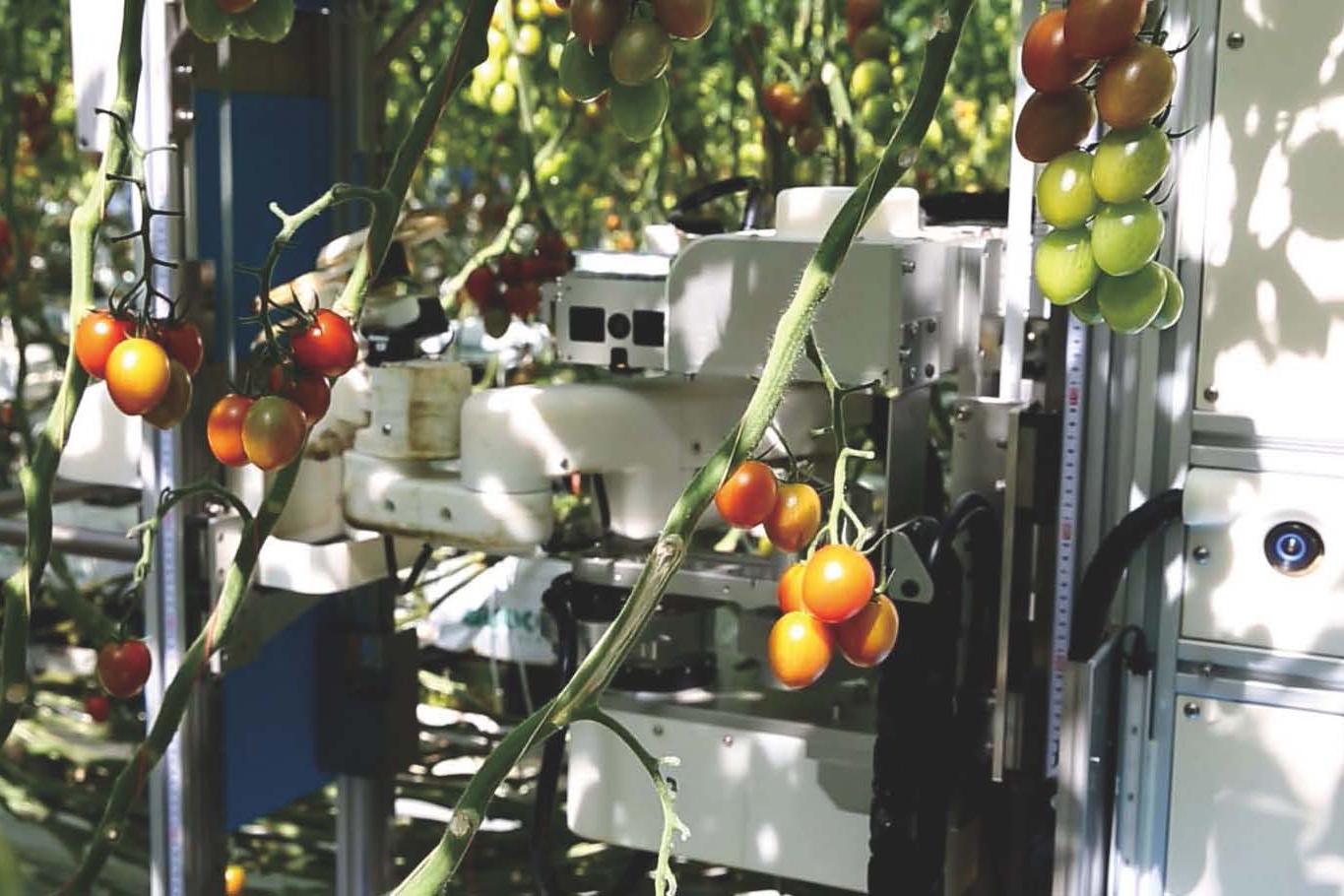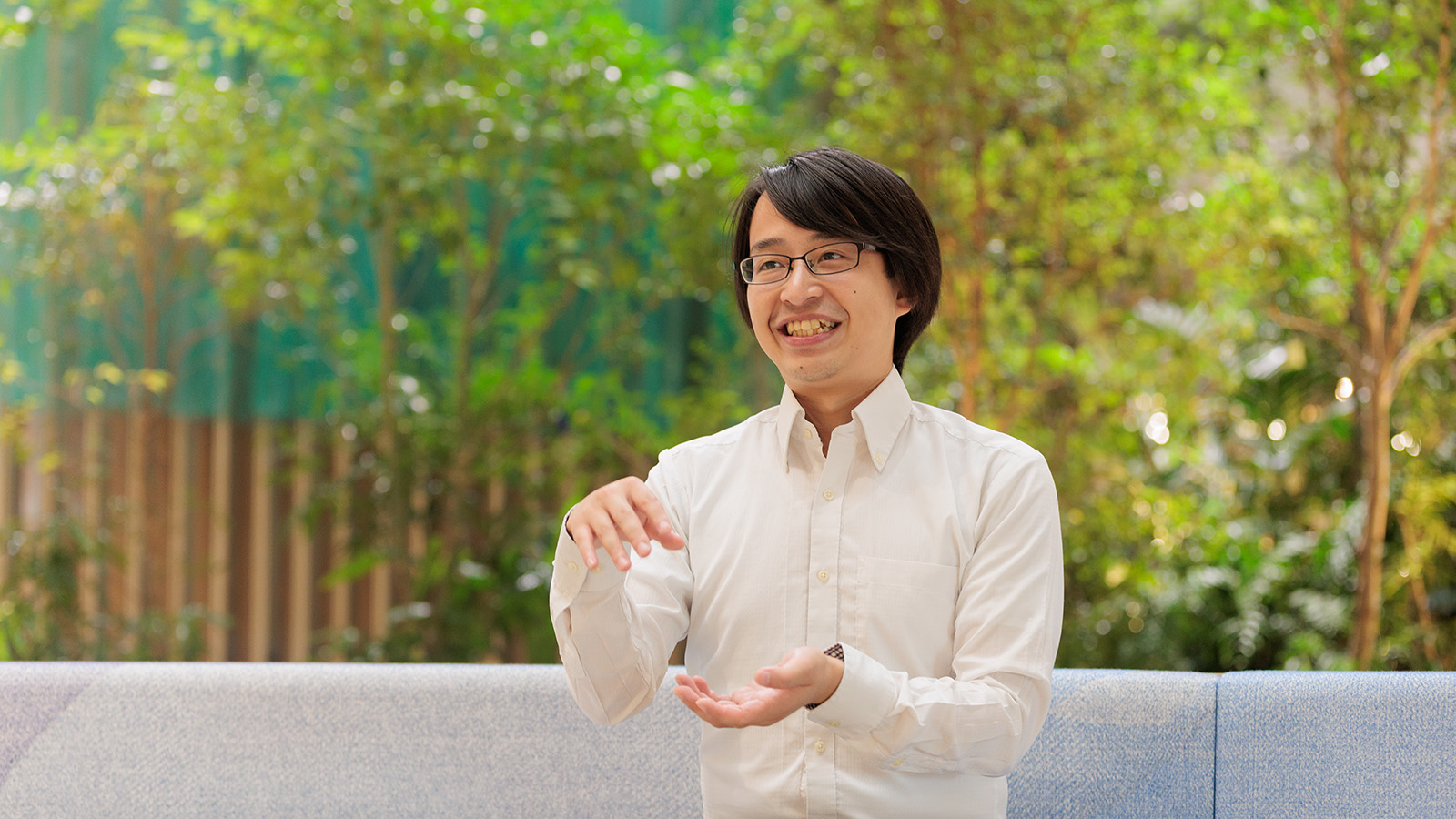
The number of people engaged in agriculture in Japan is decreasing, and the country's elderly population is rapidly increasing. Agricultural high-tech is one of the measures that are seen as a solution to these problems. In the midst of this, "harvesting robots" driven by AI and robotic technology are gathering attention. The idea is to leave harvesting work, which accounts for 20% of all agricultural work, to robots in order to increase efficiency. Advanced farms are already appearing that have put robots to work and are developing technology and know-how.
Automating the Harvest, Which Accounts for 20% of All Farm Work
The biggest problem that Japanese agriculture presently faces is the decrease in farm workers and the aging population. Whereas the number of people engaged in agriculture was 3,353,000 in 2005, it dropped to 2,606,000 in 2010, and 1,922,000 in 2016. Meanwhile, the percentage of elderly people has risen, from 58.2% at age 65 or above among all people engaged in agriculture in 2005, to 61.6% in 2010, and 65.2% in 2016.
This has reduced agricultural productivity, increased the number of fields and rice paddies that have been abandoned, and lowered the food self-sufficiency ratio. It is currently presenting a variety of challenges to Japan in both the public and private sectors. In the area of technology, we're seeing the development of plant factories, automated farm work, and highly productive food species.
In the midst of this, as an example of the challenge, there is a harvesting robot that is working at an advanced farm.
This farm contains three glass greenhouses covering a total of five hectares and cultivating several types of tomatoes. Robots are harvesting a portion of these tomatoes for verification, thus aiming to increase productivity and improve functions.
These greenhouses were originally built to achieve stable agricultural production unaffected by changes in the external environment. Because of this, it aimed to improve productivity by using computer control for the house's interior temperature, humidity, light, sprinkling, fertilizer, and carbon dioxide concentration. In line with this concept, advanced harvesting robots were also actively introduced.
According to Masataka Nakamura, who manages the farm, "Japanese agriculture will never see a bright future unless it can resolve the problem of a lack of labor. The ability of robots to lighten the harvesting workload is a major advantage. The time spent on harvesting is at least 20% of the entire agricultural work load. About 160,000 man hours are spent each year working inside our greenhouses, and 35,000-36,000 hours of this is spent in harvesting. We can automate this by using harvesting robots."

Masataka Nakamura, manager of a farm using Tomato Harvesting Robots
Trial calculations by the farm indicate that 40% of the work time involves caring for the plants, and 40% involves packaging the harvested vegetables after checking for damages and softness. This work is complicated, so it would be difficult to have the Tomato Harvesting Robots do it at this stage.
Compared to that, it is quite easy to use the robots for harvesting work. It is also a major benefit that the robots can work at night while people are sleeping. In the morning, the people who work at the farm simply need to package the tomatoes that have been harvested. "The greenhouses are limited in space, so we place the emphasis on how much we can raise the productivity within them. Raising the productivity and lowering the burden on the workers are major advantages," explains Mr. Nakamura.
When you think of robots, you may imagine that people will no longer be necessary. However, Mr. Nakamura hopes that the use of the harvesting robots will actually help to create jobs.
"Agriculture is sometimes avoided because it is described as the "3Ds" = Dirty, Dangerous, and Demanding. The robot takes care of the most demanding part. We are still at the stage of conducting research and solving one problem at a time in pursuit of the ideal solution. I hope that robot technology that has been polished at our farm will also be used at other farms. This will make Japan's farm work easier and result in more people becoming involved in agriculture," said by Mr. Nakamura.
Japanese society is said to be experiencing a work-style reform. The introduction of the Tomato Harvesting Robot may trigger a change in agricultural work from a technical viewpoint.
Ripeness Is Determined by Image Recognition
So how does the Tomato Harvesting Robot actually work? The robot moves along a rail that is laid between the tomato seedling rows to harvest the tomatoes. The robot is equipped with a camera that has an image recognition function. It uses this to find the tomatoes and determine whether they should be harvested or not. In this way, it decides the route for operation and brings an end effector close to the tomato for harvesting. It passes the targeted tomato through a ring, then pulls on it. By pressing the primary limb (called the peduncle), the tomato is picked as if it were being taken by a hand, and dropped into a pocket below.
Harvesting is presently done at the pace of one tomato every six seconds. Since people can pick one tomato every 2-3 seconds, the people are faster, but people can only work for about 3-4 hours. On the other hand, the Tomato Harvesting Robots can work for 10 consecutive hours or more, and they can also work at night, so the farm considers this speed to be sufficient for them.
One of the issues for Tomato Harvesting Robot development was the ability to judge the degree of ripeness for proper harvesting.
To achieve this, attention was focused on the changes in color. Tomatoes start out green and progressively turn red as they ripen. With this in mind, a system was developed that enables the tomatoes to be recorded and compared with color samples produced by the farm to determine their ripeness. As Mr. Nakamura explained, "There are individual differences when this decision is made by people, but that doesn't occur with the robots. Tomatoes can be picked stably with the same degree of ripeness. A trial run showed that there is absolutely no problem in this selection, and the results are satisfactory."
The color sample range can be freely set. If you want to lower the ripeness a bit to increase the amount of production, you can simply change the setting so it's closer to the green range than normal.
The Tomato Harvesting Robots can select and pick tomatoes of certain colors at night by using a flash. The robots continue working at night in unmanned greenhouses under these twinkling lights.
Aiming for a Society Where People and Robots Help Each Other
These Tomato Harvesting Robots are being developed by Panasonic. The person in charge, Ryo Toshima, visits this farm regularly to analyze the present status and further improve the functions while exchanging opinions with the people working there.
Mr. Toshima says, "We started by imitating the work being done by people in farm chores and harvesting. We used rings instead of blades, and we created a method of picking the tomatoes without directly touching them, just like manual farm work."

Ryo Toshima, Manager of Development Section, Robotics Promotion Room, Production Technology HQ, Panasonic Corporation
The performance of Tomato Harvesting Robots greatly improved recently with the introduction of artificial intelligence (AI). As Mr. Toshima says, "Previously, when a tomato was partially hidden by a leaf or a stem, the robot wouldn't be able to recognize it as a tomato. By learning photographs that included only parts of tomatoes, the robot became able to recognize them as tomatoes." In the future, by increasing the recognition performance of parts such as leaves and branches, the robot's harvesting ratio will be raised.
Up to now, Panasonic has developed robotics in a variety of fields, including medical welfare, home appliances, and social infrastructure. These robotic technologies have led to the creation of other new technologies because, as a home appliance manufacturer, Panasonic has worked with its customers, conducted research, and collected technological expertise. Guided by the key words "People-Centric Robotics," Panasonic aim to develop robots that people can safely and securely work with, and robots that are helpful to people.
Toward these efforts, Panasonic preserves two main principles. One is safety. Meticulous care is taken to prevent robots from bumping into people or injuring people in any way. And the second is that people use robot technologies that allow them to conduct the kinds of activities that they enjoy. This can be done by having the robots work instead of people, or by raising the actual capabilities of people. As we approach the era of 100-year lives, Panasonic aims to coexist with robots to create societies with pleasant lifestyles for all kinds of people.
As Mr. Toshima says, "Without limiting ourselves to agriculture, we want to develop robots that help people all over the world, and robots that make people happy. We hope that the elemental technologies that are accumulated in our Tomato Harvesting Robot will be applied to robots in a wide range of fields."

The introduction of AI has dramatically improved the Tomato Harvesting Robot. Even greater progress will be made with future research. Naturally, this is true for the field of agriculture, but it will also provide solutions to a wide variety of problems.
- Reproduced from the website "Mirai-kotohajime", by courtesy of Nikkei Business Publications, Inc.
# # #
- Disclaimer:
- We would like to note that Panasonic Newsroom is not a place to address personal Customer Service issues. Even though this is not the forum, Panasonic is always eager to resolve your concerns. Our local customer services contacts can be found at Global Support or you can see our list of Social Media Accounts to find the right channel for your queries and concerns.
Related Links
Related News
Photos
Panasonic's tomato harvesting robot working at an advanced farm









